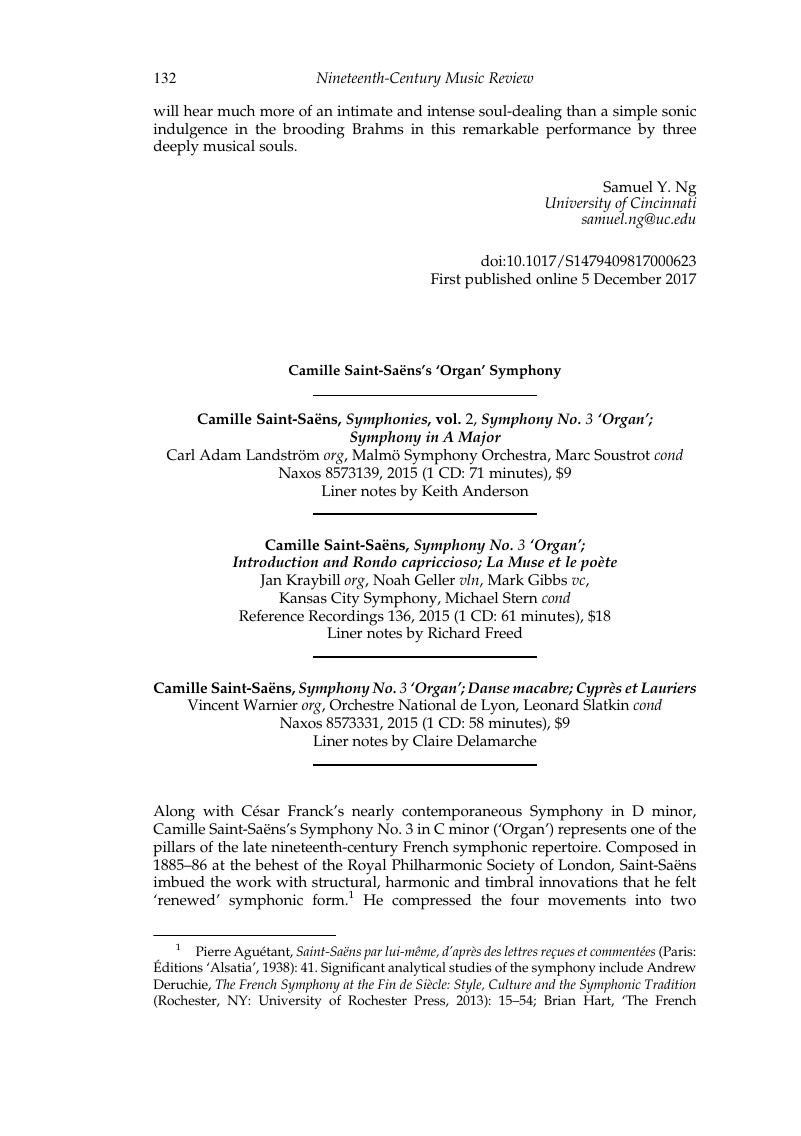No CrossRef data available.
Published online by Cambridge University Press: 22 December 2017

1 Aguétant, Pierre, Saint-Saëns par lui-même, d’après des lettres reçues et commentées (Paris: Éditions ‘Alsatia’, 1938): 41 Google Scholar. Significant analytical studies of the symphony include Deruchie, Andrew, The French Symphony at the Fin de Siècle: Style, Culture and the Symphonic Tradition (Rochester, NY: University of Rochester Press, 2013): 15–54 Google Scholar; Hart, Brian, ‘The French Symphony after Berlioz: From the Second Empire to the First World War’, in The Symphonic Repertoire, vol. 3/BGoogle Scholar, The European Symphony from ca. 1800 to ca. 1930: Great Britain, Russia and France, ed. A. Peter Brown and Brian Hart (Bloomington: Indiana University Press, 2008): 565–82; Kolb, Fabian, Tradition austère qui devient de plus en plus complexe’: Diversifikation und Pluralisierung in der französischen Symphonik, 1871–1914 (Hildesheim: Georg Olms, 2012): 317–366 Google Scholar; and Daniel Martin Fallon, ‘The Symphonies and Symphonic Poems of Camille Saint-Saëns’ (PhD diss., Yale University, 1973): 359–430. For a significant period study (albeit from the perspective of a follower of Saint-Saëns’s rival César Franck), see Ropartz, Guy, ‘A propos de quelques symphonies modernes’, in Notations artistiques (Paris: A. Lemerre, 1891): 191–197 Google Scholar.
2 Saint-Saëns’s programme note for the London premiere of the symphony, translated and reprinted in Hart, ‘French Symphony’, 566.
3 Liszt was still alive when the symphony premiered but died before its publication; Saint-Saëns accordingly altered the dedication of the printed score to read, ‘to the memory of Franz Liszt’. The symphony was not composed in Liszt’s memory as is often erroneously stated, including in the album notes to the Lyon disk.
4 An example of the latter is a celebrated 1976 Deutsche Grammophon recording with Daniel Barenboim conducting the Chicago Symphony Orchestra, combined with Gaston Litaize playing the organ at Chartres Cathedral.